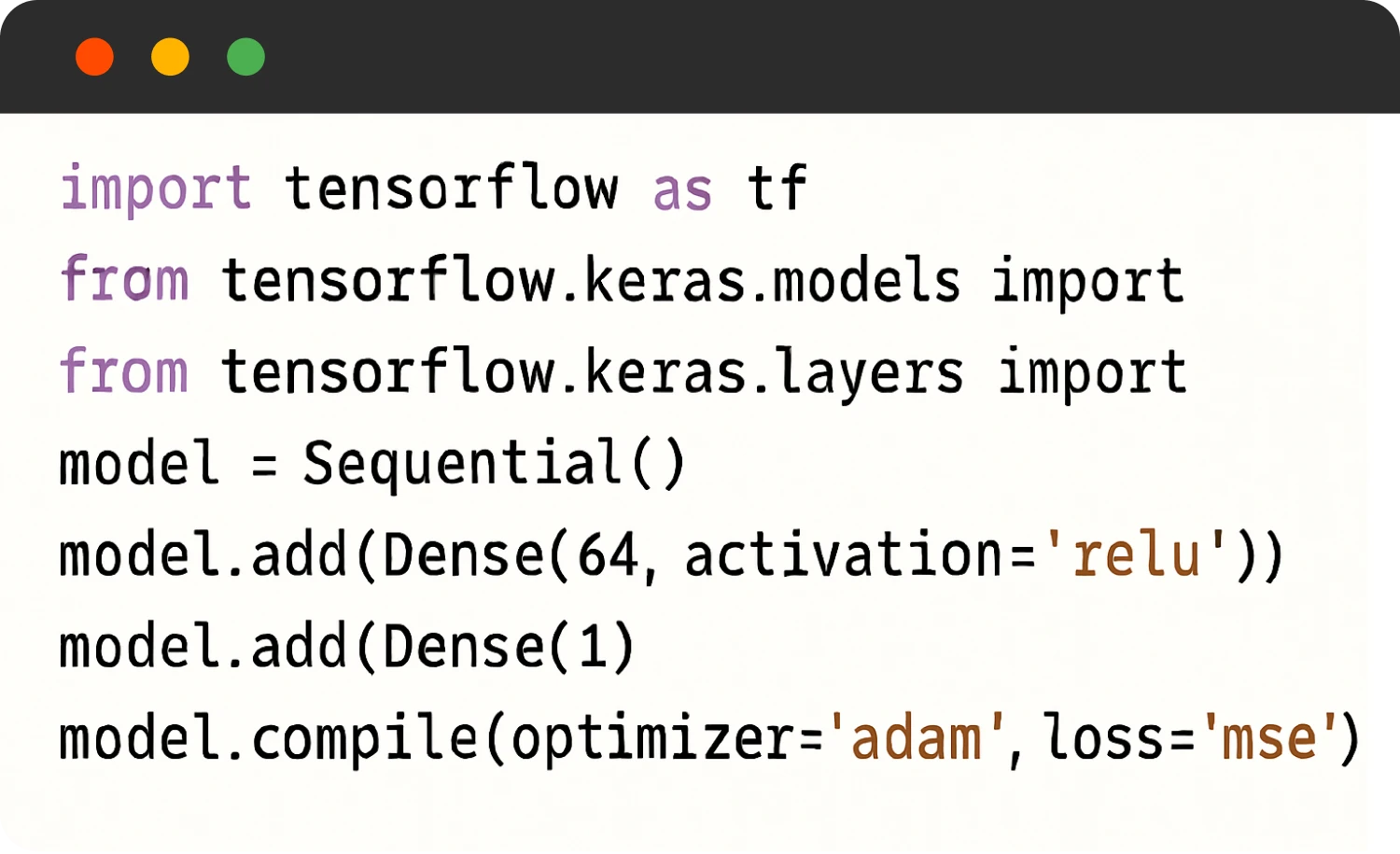




Hire ReactJS Developers Who Match Your Project Goals
Get Reliable Coders When You Hire ReactJS Developers In India
Partner with us to hire dedicated ReactJS developers who build scalable, high-performance frontends using modern JavaScript frameworks and production-ready workflows.
React + Node.js
Build full-stack JavaScript applications with seamless communication between frontend and backend, ideal for real-time apps and scalable web platforms.
React + Redux
Implement robust state management for complex applications with predictable data flow, enhanced maintainability, and component-level control.
React + GraphQL
Deliver efficient data fetching and improved performance with clean, declarative APIs, perfect for apps that require flexible data access.
React + TypeScript
Leverage static typing, better tooling, and cleaner code architecture for large-scale applications requiring long-term maintainability and team collaboration.
React + Next.js
Hire ReactJS developers to build server-rendered and statically generated applications optimized for fast load times and quick deployment.
React + Tailwind CSS
Design modern, responsive UIs quickly with utility-first styling, enabling pixel-perfect layouts with minimal CSS bloat.
Hire ReactJS developers for production-ready frontend systems
Build scalable, interactive user interfaces. Hire ReactJS developers with expertise in modern frameworks, state management, performance optimization, and seamless integrations.

Contract & C2H (Contract-to-Hire)
Quickly onboard ReactJS developers for project-specific needs with the flexibility to convert top talent to full-time roles based on performance.

Permanent Model
Build a stable, in-house team by hiring pre-vetted ReactJS developers who are aligned with your culture, goals, and long-term roadmap.

Dedicated Teams
Assemble a full-stack team that works exclusively on your ReactJS development project under your direction, while we handle operations and scalability.
The Easiest Way to Hire ReactJS Developers in India
Easily hire ReactJS developers with a fast, transparent, and reliable process designed to match your exact project and tech needs.
Share Your Requirements
Tell us your project scope, tech stack, deadlines, and whether you need frontend or full-stack ReactJS development expertise, along with any requirements.
Get Matched Within 24 Hours
We shortlist pre-vetted ReactJS developers in India aligned with your needs and ready for interviews within one business day.
Interview & Evaluate
Evaluate technical skills, code quality, communication, and domain experience through interviews or optional coding tests for confident decision-making.
Start Building
Onboard your chosen ReactJS developer quickly. We handle contracts, setup, and support so you can begin development immediately.
What We’ve Built With Leaders and CXOs
Why EngineerBabu is the Best Place to Hire Dedicated ReactJS Developers
Hire dedicated ReactJS developers in India for scalable, high-performance apps with a trusted offshore ReactJS development company like EngineerBabu.
Featured Insights and Resources
Hire ReactJS Developers Skilled in These Tech-Stacks
Hire skilled ReactJS developers proficient in essential tech stacks like JavaScript, Redux, TypeScript, HTML5, and CSS3. Our experts deliver scalable, high-performance web applications tailored to your project needs. Whether it’s building dynamic user interfaces or complex frontend solutions, get flexible engagement models and seamless integration with your team.
FRAMEWORK & LIBRARIES
ReactJS
Next.js
Redux
Zustand
Tailwind CSS
Material UI
Styled Components
Database
Firebase Firestore
MongoDB
PostgreSQL
MySQL
Supabase
Sanity
Testing Tools
Jest
React Testing Library
Cypress
Playwright
Storybook
Vitest
Build Frontends That Perform as Well as They Look
Hire dedicated ReactJS developers who write clean code, ship fast, and scale with your product.
80+Happy Clients
11+ Years of Experience
170+Expert Level Talents
Trusted by Founders, Startups, And Enterprises
Hiring Manual
How to Hire ReactJS Developers?
To hire React.js developers effectively, the key is to start with a clear understanding of your project requirements and the skill set needed. By following a structured approach to sourcing candidates and conducting detailed evaluations, you can find developers who align with your needs.
Steps to Hire React.js Developers:
-
Define Project Requirements: Begin by outlining your project's scope, the technical specifications, and the specific skills you require from a React.js developer
-
Choose Hiring Type: Decide whether you need a remote developer, a contract worker, or a full-time employee. Each option comes with its own set of advantages based on the project’s length and complexity.
-
Source Developers: Look for developers across various online platforms that connect you to a wide range of talent. Consider using specialized platforms that focus on React.js expertise, as well as more general freelance networks.
-
Evaluate Resumes and Portfolios: Review potential candidates’ profiles thoroughly, focusing on relevant experience, technical skills, and past projects. Look for developers with a proven track record in React.js and related technologies. or full-stack roles, also assess familiarity with Node.js, Laravel, Django, or Ruby on Rails.
-
Conduct Interviews:
- Technical Assessments : Test candidates’ React.js proficiency through coding challenges or technical interviews. This helps assess their coding style, problem-solving skills, and understanding of best practices.
- Behavioral Questions : Evaluate communication skills, collaboration capabilities, and whether they can work effectively within your project team.
-
Shortlist and Select : After completing the interviews and assessments, identify the most qualified developers and begin the selection process.
-
Onboard the Developers : Provide the selected developers with the necessary tools, resources, and guidelines to help them integrate smoothly into the project.
What Should You Know Before Hiring ReactJS Developers?
Before you hire ReactJS developers, it's important to have a clear understanding of your project’s frontend requirements and product goals. Define the scope of your application - is it a simple landing page, a full-scale dashboard, or a real-time SaaS platform? Identify the architectural approach: do you need a Single Page Application (SPA), a Server-Side Rendered (SSR) app for SEO, or a Progressive Web App (PWA) for offline support?
Additionally, consider:
-
Design complexity Will your app require custom components, micro-interactions, or third-party UI libraries?
-
API integration Are you consuming REST APIs, GraphQL, or Firebase services?
-
Performance goals Do you have strict loading time requirements or dynamic content to render?
Having clarity on these areas will help you hire ReactJS developers who match your technical expectations and development approach.
How Do You Choose the Right Tech Stack With ReactJS?
ReactJS is a powerful frontend library, but it truly shines when paired with the right tools. Your tech stack should be chosen based on your product's complexity, performance needs, and scalability goals.
Here's when to consider key technologies:
-
Next.js Use it for server-side rendering, SEO-friendly pages, static site generation, and hybrid React apps.
-
Redux / Zustand / React Query Great for managing complex application state or async data fetching in large-scale apps.
-
Tailwind CSS A utility-first CSS framework ideal for rapidly building responsive, maintainable UIs with minimal bloat.
-
Firebase Use for real-time data syncing, authentication, hosting, and serverless backend services.
-
Headless CMS Ideal when you want to separate content management from frontend logic.
Choosing the right combination allows your ReactJS development team to build faster, optimize performance, and streamline deployment.
What Skills Should a ReactJS Developer Have?
To build production-ready, scalable applications, a ReactJS developer should bring more than just basic JSX knowledge. Here's what to look for:
-
Strong foundation in JavaScript (ES6+) and TypeScript Core language proficiency for modern React development.
-
Deep understanding of component lifecycle and hooks useEffect, useMemo, useCallback mastery for optimal performance.
-
Proficiency with state management tools Redux, Zustand, Recoil for complex application state.
-
Familiarity with Next.js For SSR, SSG, and routing capabilities.
-
Performance optimization experience Code splitting, lazy loading, and memoization techniques.
A well-rounded ReactJS developer should also have a product mindset, capable of turning design systems into user-friendly, production-quality interfaces. Bonus points for experience with API development , working in Agile teams, or collaborating on cross-platform apps using Flutter or React Native
ReactJS vs. Other Frontend Frameworks
Choosing the right frontend framework depends on your team structure, project goals, and long-term maintainability. Here's how React compares:
| Criteria | ReactJS | Angular | Vue.js |
|---|---|---|---|
| Type | JavaScript library | Full-fledged framework | Progressive framework |
| Learning Curve | Moderate | Steep | Easy to moderate |
| Best For | Custom apps, reusable components, scalable SPAs | Large-scale enterprise apps with strict structure | Small to medium apps and fast prototyping |
| Architecture | Component-based, flexible | Opinionated and structured | Component-based |
| State Management | Requires external libraries (Redux, Zustand, etc.) | Built-in (RxJS, NgRx) | Vuex (optional) |
| Performance | High with proper optimization | High but heavier bundle size | Good, depending on app complexity |
React offers the flexibility to scale across MVPs and enterprise applications while integrating with any backend, making it a top choice for most web projects.
When Should You Use Next.js With ReactJS?
Next.js is a powerful framework built on top of React that extends its capabilities to support modern app requirements such as:
-
Server-Side Rendering (SSR) Essential for SEO-heavy applications like ecommerce, publishing, or marketing sites.
-
Static Site Generation (SSG) Ideal for blogs, documentation sites, or any content that doesn't change frequently.
-
Hybrid rendering Combine SSR and SSG where needed to optimize performance.
-
Built-in routing and API routes Simplifies navigation and server-side functions without separate setup.
-
Performance optimization Image optimization, code splitting, and smart bundling included by default.
You should use Next.js with ReactJS when your application needs SEO benefits, better performance, fast load times, and cleaner development workflows.
How to Evaluate a ReactJS Developer During Interviews?
Evaluating ReactJS developers goes beyond checking GitHub profiles or portfolios. Here's a structured way to assess candidates:
-
Technical Screening Ask conceptual questions about hooks, JSX, component patterns, virtual DOM, and React's rendering behavior.
-
Practical Coding Assign a task like building a to-do app with custom components, conditional rendering, and state management.
-
Performance Understanding Test knowledge of optimizing re-renders, lazy loading, and memoization.
-
Tooling Familiarity Ensure they're comfortable with version control (Git), bundlers (Webpack/Vite), and testing libraries.
-
Communication Skills A good React developer should explain decisions clearly and work well with designers and backend engineers.
EngineerBabu handles pre-vetting so you can interview ReactJS developers already evaluated for these capabilities.

Hiring ReactJS Developers? Start Here First









 Verified by Engineer Babu
Verified by Engineer Babu
 Experience: 5 Years
Experience: 5 Years
 Availability: Full-time
Availability: Full-time
























































